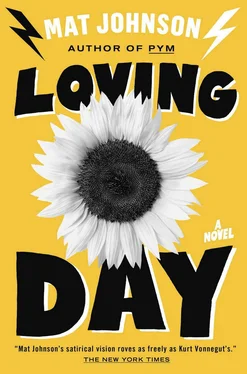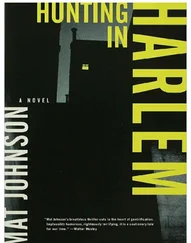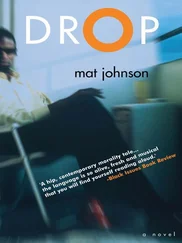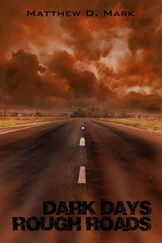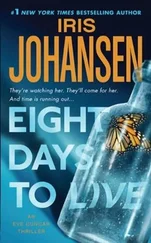“Not going to happen,” Tal repeats, leaning in and hitting the words harder so they find purchase.
—
Out front of the school, I can’t even speak to her. I can’t even look at her. Instead, I get the engine on the bike revving while Tal stands by playing with her phone. The boy she discovered, he’s standing there too. I won’t even look at him. Handing Tal her helmet, I scoot forward enough for her to climb behind me. Tal takes it, but puts it on the ground and just stands there, now talking to the boy. He gives her a note, his phone number I’m sure.
Lovely. I am fully prepared to just stare back, to wait her out until she realizes that I am the one driving in every sense of the word. But Tal’s a teenager, and I remember teenagers are feral creatures, hormone-mad and erratic as wild colts, and after a good thirty seconds I cave and say, “You’ve made your point. Your complaint has been registered with the Ministry of Displeasure. Now, you’re going to say goodbye and get on the bike so we can go home.”
“You should try the biracial school,” the boy says to me. He’s nodding like this makes so much sense. He’s smiling as if I know what he’s talking about.
“Who are you?” I demand. It’s easier being annoyed at him, this strange kid. Less morally complicated. He’s got brass rings around the tips of his locks, and I’ve never seen that before but I instantly judge him for it. Clearly, he wants to sleep with my daughter.
Clearly, I am supposed to want to strike him for this. This is all very new but I’m pretty sure I have that part right.
“I’m Kimet,” he says, like that is supposed to answer any of my questions. “There’s another school. Another new charter school. It’s themed for mixed kids. You guys could try there, too. They’re enrolling.”
“Listen to him, Pops. Mixed kids. I’m mixed, right? I qualify. You want me to do the whole race education thing, then let’s try that one. If that doesn’t work, we can move on to Chinatown or whatever. Maybe I can pass for Korean. But I’m not going here. That man said I flap around like a pigeon.”
“Tal, there are mixed kids here, and that doesn’t mean anything. Mixed people are just a kind of black people anyway. You wouldn’t be the only mixed kid here, I’m sure.”
“I’m mixed,” Kimet says.
“See?” I say, pointing at him, relieved.
“But if I could, I’d go there too,” Young Mr. Kimet keeps going. I look at him. I try to muster the “look,” the look that dads do when they want you to become silent or face some vague threat, but I have no training. When he starts talking again I interrupt him.
“Yeah? If it’s so great, why don’t you go there?”
“Because my dad won’t let me. He’s the principal here. My dad’s Kamau.” Tal finally gets on the bike, but tries to hand me a paper.
“Not unless you agree to take me by here first,” she says, holding up the address. Atop it says, Mélange Center . I see these words and they’re familiar and I assume it’s from my distant past before I connect it to my recent one. Below it lists what street and such, but by the time I look at that all I see is the biracial militant and destiny or at least an opportunity to feign fate. I don’t believe in fate, but I don’t believe in ignoring fate when it disregards subtlety.
—
We ride to Mélange. Partly because Tal is insisting on it. And partly because I’m a lonely man who saw a person he keeps thinking about and wants to know why. Every time my motor idles, I yell to Tal all about “mixed” people. They are black people who hate being black, and the only reason they don’t try to be white is that whites folks won’t have them. That’s one red light. They are color-struck brown-bag-clubbers, from the days when you had to be lighter than a brown bag to be admitted. That’s at a stop sign. And African Americans have always been racially mixed, most of us are also of Native American and European ancestry. Even the name, African American instead of African, implies this. But that’s not good enough for them. They just want to be special. They’re self-hating Negroes, Oreos who will do anything to distance themselves from their race. That’s while filling up the gas. Tal yells “Okay” every time I finish a sentence, yells even when the motor’s off. She even repeats my words back to me, stripped of nuance or any attempt at understanding.
When we get to the address it seems like none of this might matter anyway. Her little phone says Wolcott Drive but the digits don’t match up. It’s an odd number and there are no odd numbers on this side of the street, just trees. We’re by the park, Valley Green. “Nothing,” I say and she just pinches my back and tells me to keep driving. I go up and down the street. I go on the other end of the road where there are a few stately homes, and show her they are on the even-numbered side, to prove my point. I’m disappointed, too, for my own reasons.
Maybe that woman was going to save me.
“The Umoja School won’t be that bad,” I say.
“Everyone kept staring at me,” Tal says.
“It’ll be a good learning experience,” I say.
“They were all wondering, ‘What the hell’s the white girl doing here?’ ” Tal says.
“They’ll get used to you. You’ll get used to it. I have,” I tell her. I haven’t. Tal’s silent. “Come on, let’s go shopping, my treat. I’ll buy you your dashiki.”
“Oh my God, please. Please keep looking,” Tal says, but I can hear that even she knows the truth, that there is nothing out here. And that’s the truth; there’s nothing out there. The Umoja School will be okay. She’ll go. I’ll make her go, or I’ll kick her out. At least I’ll threaten to, and since Irv already did, maybe she won’t call my bluff. I give one more pass to show her it’s hopeless, drive all the way down to where the street dead ends. Nothing here but fourteen hundred acres of part of the largest urban woods in America. I point to the trees, tell her if it were here, we’d see it, then kick the gear down from neutral when Tal says, “There!”
A sign. It’s handmade, painted. It says, THE MÉLANGE CENTER FOR MULTIRACIAL LIFE. It looks like the worst hippie art project of 1972. But Tal is already off the bike, climbing up the deer path through the woods.
I kill the motor, follow her. I call, but she doesn’t stop. The path is steep, but Tal’s shooting forward, using her lanky legs until she’s over the lip and gone from me. There’s a moment of panic, fear that I’ve already lost her. In the woods. But when I get to the top of the hill Tal’s standing there, in front of a gate. It’s metal, new, temporary, still has the fencing company tags along the side of it. Past it are mobile trailers, and the summer hum of belabored air-conditioning. I don’t see anyone though, and before I can tell Tal this is clearly a mistake, that we should leave, she starts yelling. “Hello! Hello!” She keeps saying it. Tal is loud; she sounds scared. And she is, she’s scared I’m going to send her to the Umoja School. But whatever’s in her voice sets a couple of the trailer doors opening, and some brown people emerge and start walking toward us. And one white guy. He’s an ogre. Seven feet tall, easy. And he has blond dreadlocks. Doesn’t anyone comb their hair anymore? Damn near albino pale with his yellow hair matted together in thick rolls that shoot off loose and straight at the end like a dog’s tail.
“Yo cuz, can we help you?” he asks and it’s more of a demand than inquiry. The giant’s close enough that we can see the pale blue of his eyes and read his T-shirt. It says Malcolm&Garvey&Huey&George . “This is a private area, my man. If you here to see someone, you best name—”
Читать дальше
